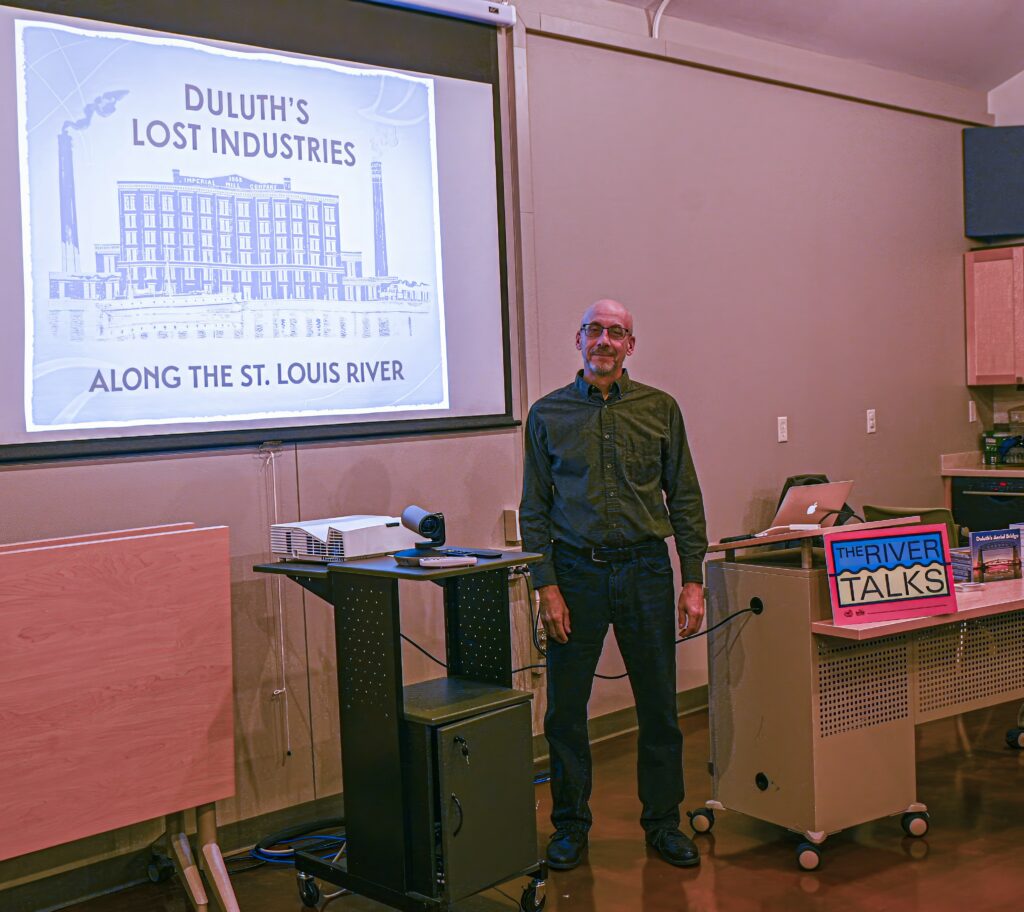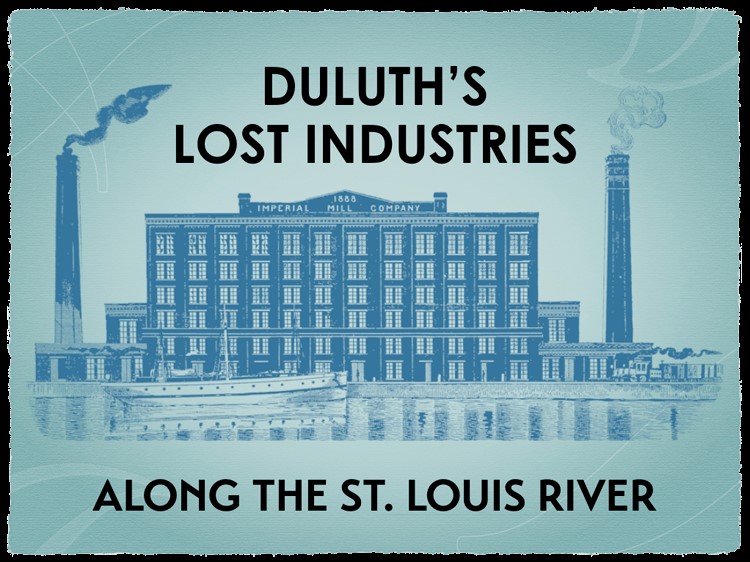Lost Industries on the St. Louis River
By Lily Cartier, University of Minnesota Duluth
Tony Dierckins shared his knowledge of the history of the industries surrounding the waterways of Duluth, Minnesota, and Superior, Wisconsin, for the October River Talk. He focused on businesses that have been lost or changed along the way.

Tony Dierckins. Image credit: Michael Anderson
Dierckins began his talk with the disclaimer that he is not a scientist or an environmentalist, but a writer. He is currently working on a book about the railways of Duluth and Superior.
The Ojibwe people in the area based their economy on fur trading with the French during the 16th and 17thcenturies. But by the mid-1800s, the fur trade died, and with it came the collapse of the Ojibwe economy.
The year 1856 marked the establishment of Duluth; a great vision for a shipping center and copper mines. This was followed closely by the economic panic of 1857, however. The search for copper was unsuccessful and most of the population moved away. It wasn’t until 1869 that the population began to boom again with the establishment of the first “lost” industry: the railway.
These railways, sponsored by Jay Cooke, brought a construction boom to the Duluth area that lasted almost thirty years. Even throughout the boom and busts that fluctuated throughout this century, the railways continued to thrive and connect this northern area. Railroads continued to spread and grow, becoming the peak industry bringing in money and a larger population to Duluth and Superior. This industry continued to thrive until the 1970s.
The railways created a commerce division in Duluth and Superior. Through the late 1980s, industries continued to pop up along the shore of Lake Superior. Leather tanneries, wholesalers and slaughterhouses are just a few of the many industries that moved the economy along.
These railroads were fueled by the coal industry, which was making great headway in this area throughout this century. It is from this industry that we are able to see today how the east and west divide of Duluth formed. Those who were poorer were forced to continue to live in the coal-polluted area where the factories were, while the rich moved east to escape the smoke and particulate matter in the air.
Individuals around the area were displaced due to the growing number of industries and a lack of space. The Ojibwe people took the hardest hit. Since European settlement, Dierckins said there has never been a larger percentage than two percent of Ojibwe people in the population.
The next lost industry was lumber milling, which came closely after the making of the railways. As trees were not a quickly renewed resource, industries in the east United States moved to Duluth to find lumber after cutting over their supplies. Duluth and Superior became the center of this industry until the early twentieth century, when the equipment was sent to the West Coast to continue the pursuit of big lumber. The legacy of this industry can be found in piles of waste wood lining the bottom of the St. Louis River, which has been the focus of several habitat restoration projects.
The next lost industry of Duluth and Superior that Dierckins discussed was the grain shipping industry. At its peak, Duluth was home to around 24 grain elevators and the first-ever concrete grain silo. Though there is not much pollution from grain production itself, the coal that was used to manufacture the products created immense emissions.
The grain shipping industry made way for the shipping of iron ore and taconite out of local harbors. Ore docks were built all around Lake Superior, each bigger than the last.
Shipping cannot be done without boats. The shipbuilding industry was a wartime creation, shipping boats and different metals to various places in the country to support WWI and WWII efforts. This created many jobs for the local economy but also created a plethora of pollutants such as carbon monoxide and the “icky stew” of slag runoff into the water.
Most of these industries were boom and bust, moving on with the depletion of natural resources. Today, Duluth and Superior’s economies have turned to environmentalism and tourism. Millions of dollars have been spent to clean up the river from the legacies of the past.
The next River Talk will be held on Nov. 8. Euan Reavie with the Natural Resources Research Institute will talk about harmful algal blooms in the estuary.
The post Lost Industries on the St. Louis River first appeared on Wisconsin Sea Grant.Blog | Wisconsin Sea Grant
https://www.seagrant.wisc.edu/blog/lost-industries-on-the-st-louis-river/

